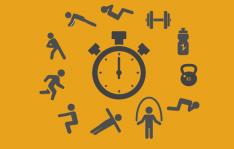
When competing in triathlon, there are so many factors to consider as part of your training just to get to the start line. You can diligently put in that hard training year-round, only to be tripped up by one "minor" detail on race day--heat.
Have you ever been on holiday somewhere very hot and humid, so hot that when you come off the plane it feels like you've walked into a sauna? Imagine having to race in that very same sauna a few days after your arrival. Many of us from Northern climates are unprepared for the heat at popular IRONMAN events in either subtropical or even Central European regions.
Heat is one race factor that is often underestimated, but it's also one you can plan and train for.
HEAT, HUMIDITY AND HOW IT AFFECTS YOUR BODY
Not everyone needs heat acclimation--like those pro triathletes who seem to be continually globetrotting--but most of us do. Heat not only impairs performance, but it could lead to heat stroke or worse. In an IRONMAN you will start your swim in the cooler hours of the morning, but you will be running in the afternoon and there is no escaping the temperatures and humidity levels at that time of day.
So, what does heat do to the human body? Have you ever wondered why you turn red in the heat? That's your blood being drawn away from your muscles in order to cool off your skin. It takes a lot of energy to cool your body down, so more glycogen as an energy source will need to be consumed. The larger the athlete, the more glycogen is required.
In warm weather you will get a higher increase in lactate concentration because you will likely reach higher heart rate zones at much lower speeds. So those heart rate zones that you stuck to all season simply become invalidated, due to an increase in heart rate caused by decreased blood flow.
THREE STRATEGIES FOR YOUR HEAT ACCLIMATION TRAINING
Heat acclimation training improves the body's ability to exercise in higher temperatures. For most triathletes, training for an IRONMAN starts early in the year and never in subtropical temperatures. This does not simulate anything close to race day conditions. Here are some training strategies to consider:
- The DIY approach: Simulate heat by training for at least an hour in the afternoons with a few extra layers of clothing on, aiming for about five to 10 sessions over a period of two weeks preceding a race. This is a very basic approach that may work for you if outdoor temperatures are high enough. In winter, you could also set up your turbo trainer in your laundry room with the dryer running for heat AND humidity. When starting out, you should reduce your intensity slightly for the first few sessions to avoid any negative heat-related effects.
- Hyperthermic Conditioning: This is heat acclimation using an artificial source such as a sauna. The protocol is simple in that you train for up to an hour prior to using the sauna. The reason is that your core body temperature is already increased, which will allow for greater heat adaptation. You should start this approach three weeks out from your event for 15 minutes a session, three times a week. Closer to the event, you can increase the duration to 30 minutes, four times a week.
- Heat Chambers: If you're lucky enough to live close to a university with a well-equipped sports physiology department, you could potentially use one of their heat chambers. This is the gold standard for heat training, as you can control all variables for specific environmental conditions and it is completely customizable. General recommendations for a full acclimation program would consist of seven to 14 sessions, two weeks out from your event. You would be in a monitored environment, have use of a treadmill or exercise bike in the chamber and would have feedback from seasoned professionals.
In addition to all of these above heat adaptation strategies, you should also plan a hydration/electrolyte supplementation strategy that's specific to your needs. This should be based on your sweat rate and is best done with the help of a coach.
- 1
- of
- 2









Discuss This Article